|
|
Harnessing the power of nature has always been the key to unlocking humanity’s greatest innovations without hurting the world we live in. In the realm of renewable energy, two giants stand tall, vying for supremacy in a world hungry for sustainable solutions.
Welcome to the ultimate showdown between two titans of green technology: wind turbines and solar panels.
These mighty warriors command the forces of wind and sunlight, engaging in an epic battle for dominance over the energy landscape. Brace yourself for a captivating journey through the inner workings of these marvels as we delve into the intricacies of their designs, explore their environmental impact, and unravel the mysteries behind their efficiency.
Join us as we uncover the secrets hidden within the spinning blades and glistening photovoltaic cells, exposing the strengths and weaknesses of each contender. The stage is set, let the renewable energy clash commence!
The Evolution: Tracing the Origins of Wind Turbines and Solar Panels
Wind turbines and solar panels have come a long way since their humble beginnings. To fully understand the current clash between these renewable energy powerhouses, we must trace their origins and witness their evolution over the years.
Wind Power
Wind turbines have a rich history that dates back centuries.
The concept of harnessing wind power for various applications can be traced as far back as 200 BC when simple windmills were used in Persia to grind grain and in China to pump water. These early windmills featured vertical-axis designs and were primarily mechanical in nature.
Fast forward to the late 19th century, and wind turbines began to take shape as we know them today.
In 1888, Charles F. Brush introduced the first large-scale wind turbine in Cleveland, Ohio. Standing at a towering 18 meters (60 feet) with a diameter of 17 meters (56 feet), it featured a horizontal-axis design and generated electricity for powering lights on Brush’s estate.
Over the years, advancements in technology and engineering transformed wind turbines into efficient electricity generators.
Modern wind turbines are often colossal structures, reaching heights of over 200 meters with blade spans exceeding 100 meters.
These turbines utilize aerodynamic principles to capture the kinetic energy of wind, converting it into electrical energy through the rotation of their blades. Today, wind turbines can be found dotting landscapes around the world, providing renewable energy to millions of people.
Solar Energy
On the other side of the renewable energy battlefield, solar panels have a more recent history. The discovery of the photovoltaic effect, the phenomenon where certain materials generate an electric current when exposed to light, paved the way for the development of solar cells.
In 1839, French physicist Alexandre Edmond Becquerel first observed this effect, but it wasn’t until the mid-20th century that significant progress was made.
Bell Laboratories introduced the first practical silicon solar cell in 1954, with an efficiency of around 6 percent. While not very efficient by today’s standards, this breakthrough opened the door to further advancements.
As technology developed, solar panels became more efficient and affordable.
Thin-film solar cells emerged as an alternative to traditional silicon-based panels, allowing for flexibility and easier integration into various applications. The cost of solar panels steadily declined, leading to widespread adoption and a solar revolution across the globe.
Today, solar panels come in various shapes and sizes, capable of capturing sunlight and converting it into usable electricity.
From rooftop installations on residential buildings to vast solar farms covering expansive areas and even vehicles, solar panels have become a symbol of the renewable energy movement.
Understanding the Mechanics: How Wind Turbines and Solar Panels Work
To truly appreciate the capabilities of wind turbines and solar panels, we must delve into the inner workings of these marvels. Understanding their mechanics will shed light on how they harness nature’s power and convert it into usable energy.
Wind Turbines
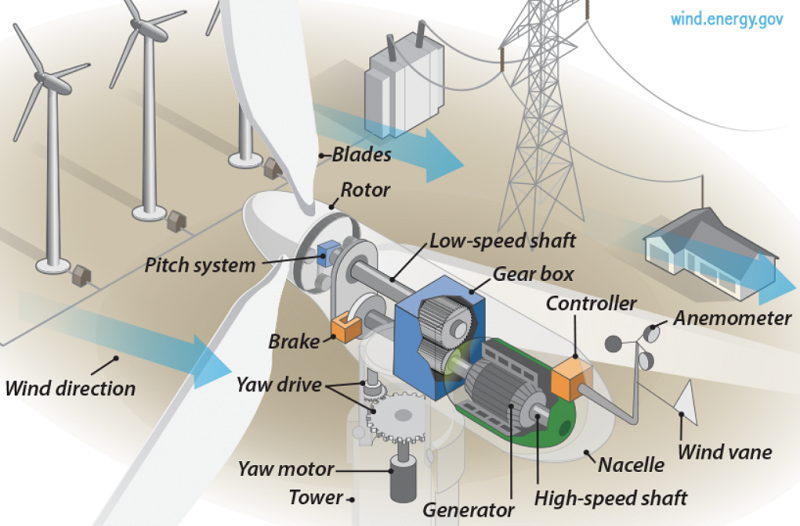
source: https://actionrenewables.co.uk/news/how-does-a-wind-turbine-work/
Wind turbines operate on a simple yet ingenious principle: capturing the kinetic energy of wind and converting it into electricity. Let’s break down the mechanics:
- Rotor Blades: The most visually striking component of a wind turbine is its rotor, consisting of two or three large blades. These blades are aerodynamically designed to efficiently capture the energy from the wind as it blows past them.
- Wind Capture: As the wind flows across the rotor blades, it imparts a force on them, causing them to rotate. The design of the blades ensures that they can extract the maximum amount of energy from the wind.
- Generator: The rotating motion of the blades is transmitted to a generator housed within the turbine’s nacelle, located at the top of the tower. The generator converts the mechanical energy of the rotating blades into electrical energy.
- Transmission: The electrical energy generated by the turbine is transmitted through internal wiring within the tower and then sent to a power grid or stored in batteries for later use.
Wind turbines are typically installed in wind farms, where multiple turbines are strategically placed to optimize energy generation. The location of wind farms is crucial, as they require areas with consistent and strong winds to operate at maximum efficiency.
Solar Panels
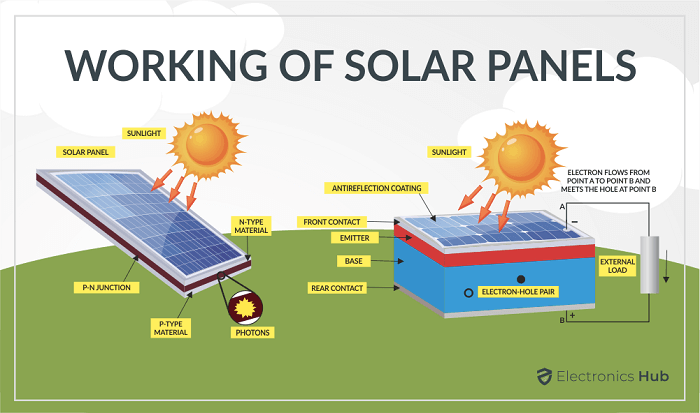
source: https://www.electronicshub.org/solar-panel-work/
Solar panels harness the power of sunlight through a process called photovoltaics, where light energy is directly converted into electricity. Here’s how it works:
- Photovoltaic Cells: Solar panels consist of multiple photovoltaic cells, also known as solar cells, made from semiconductor materials such as silicon. These cells have a layered structure that enables them to generate electricity when exposed to sunlight.
- Photovoltaic Effect: When sunlight strikes the surface of a solar cell, it excites electrons within the semiconductor material, causing them to move and create an electric current. The solar cell’s design and composition determine its efficiency in converting sunlight into electricity.
- Electrical Current: The electric current generated by each solar cell is direct current (DC). To make it usable for most applications, such as powering household appliances, it needs to be converted into alternating current (AC) using an inverter.
- System Integration: Solar panels are typically interconnected to form solar arrays. These arrays can be installed on rooftops, open fields, or even integrated into building materials. The solar panels capture sunlight throughout the day, generating electricity that can be used immediately or stored in batteries for later use.
Solar panels are highly versatile and can be scaled to meet various energy needs. They are commonly used in residential, commercial, and utility-scale applications, providing a reliable and sustainable source of electricity.
Environmental Impact: Assessing the Green Footprint
As we weigh the merits of wind turbines and solar panels, it is essential to consider their environmental impact. Both technologies offer significant advantages over traditional fossil fuel-based energy sources, but they are not without their ecological considerations.
Wind Turbines
Wind turbines have several positive environmental attributes that make them an attractive choice for renewable energy generation:
- Carbon Emissions Reduction: Wind turbines produce electricity without burning fossil fuels, resulting in minimal greenhouse gas emissions. This helps mitigate climate change and reduces the overall carbon footprint of the energy sector.
- Land Use Efficiency: Wind turbines can be installed on agricultural land or in offshore locations, utilizing space that is often unsuitable for other activities. This allows for dual land use, preserving the surrounding environment while generating clean energy.
- Wildlife Considerations: While wind turbines can pose risks to certain bird and bat species due to collisions, modern designs have incorporated mitigation measures to minimize these impacts. Environmental assessments and careful placement of wind farms can further reduce potential harm to wildlife.
- Resource Availability: Wind energy is a virtually inexhaustible resource as long as there are consistent wind patterns. Unlike fossil fuels, which require extraction and refinement, wind power relies on a naturally occurring phenomenon.
However, wind turbines also have some environmental considerations:
- Visual Impact: Wind farms, particularly when installed on land, can alter the visual landscape, potentially affecting scenic views and local aesthetics. Community engagement and proper siting can help address these concerns.
- Noise Pollution: Wind turbines can generate noise during operation, which can be a concern for nearby residents. Proper turbine design and setback regulations can mitigate noise impacts and ensure minimal disturbance.
- Material Usage and End-of-Life Management: Wind turbines require significant amounts of materials for their construction, including metals, fiberglass, and composites. Proper recycling and disposal methods are crucial to minimizing waste and environmental impact when turbines reach the end of their operational life.
Solar Panels
Solar panels also offer compelling environmental benefits, contributing to a greener future:
- Clean Energy Production: Solar panels generate electricity without emitting greenhouse gases, reducing reliance on fossil fuels and mitigating air pollution. This leads to improved air quality and public health benefits.
- Abundant Resource: Sunlight is an abundant resource available in many regions worldwide. Solar energy is virtually limitless, and its availability is predictable, making it a reliable source of renewable power.
- Scalability and Modularity: Solar panels can be easily scaled up or down to match energy demands, making them adaptable to a wide range of applications. They can be installed on rooftops, integrated into buildings, or deployed in large solar farms.
- Low Maintenance: Once installed, solar panels require minimal maintenance, with no need for fuel or frequent operational interventions. This reduces the potential for environmental disturbances associated with ongoing energy production.
However, there are also environmental considerations associated with solar panels:
- Manufacturing Impact: The production of solar panels involves the extraction of raw materials, such as silicon, and the use of energy-intensive manufacturing processes. It is crucial to adopt sustainable manufacturing practices and improve the energy efficiency of production facilities.
- Waste Management: Solar panels have a long operational life, but eventually, they may reach the end of their usefulness. Proper disposal and recycling methods for solar panels are essential to prevent potential environmental contamination and maximize resource recovery.
- Land Use Concerns: Large-scale solar farms require significant land areas for installation. This can impact natural habitats, ecosystems, and agricultural activities. Striking a balance between solar development and land conservation is crucial.
Efficiency Showdown: Comparing Output and Performance
When it comes to renewable energy technologies, efficiency plays a vital role in determining their viability and competitiveness. Let’s compare the output and performance of wind turbines and solar panels to assess their efficiency.
Wind Turbines
The efficiency of wind turbines is primarily determined by their capacity factor, which measures the ratio of the actual energy produced to the maximum possible energy output.
- Capacity Factor: Onshore wind turbines typically have a capacity factor ranging from 25% to 45%, meaning they generate electricity at a percentage of their maximum capacity over a given period. Offshore wind farms can achieve higher capacity factors, often surpassing 50%, due to stronger and more consistent wind resources.
- Seasonal and Diurnal Variations: Wind energy production can vary throughout the year and even within a day, depending on the prevailing wind patterns. This variability can influence the reliability and consistency of wind power generation.
- Power Curve: Wind turbines have a power curve that depicts their energy output at different wind speeds. They start generating electricity at a certain wind speed, called the cut-in speed, reach their maximum power output at the rated wind speed, and then gradually reduce output at higher wind speeds to protect the turbine from damage.
- Turbine Placement: Proper placement of wind turbines is crucial to maximize their efficiency. Factors such as wind resource assessment, wind turbine design, and spacing between turbines in a wind farm can significantly impact their overall performance.
Solar Panels
The efficiency of solar panels refers to the amount of sunlight they can convert into usable electricity. Advances in technology have led to higher efficiency levels over the years.
- Efficiency Ratings: Solar panel efficiency is expressed as a percentage, representing the proportion of sunlight that can be converted into electricity. Traditional silicon-based solar panels typically have efficiency ratings ranging from 15% to 20%, while some advanced designs can exceed 20%.
- Geographic Considerations: The efficiency of solar panels can vary depending on factors like geographic location, tilt angle, and orientation. Regions with ample sunlight and optimized panel positioning can achieve higher energy yields.
- Temperature Sensitivity: Solar panel efficiency can be influenced by temperature. While sunlight is necessary for power generation, excessive heat can reduce panel performance. Some solar panel designs incorporate cooling mechanisms or materials to mitigate temperature-related efficiency losses.
- Tracking Systems: Solar tracking systems, such as single-axis or dual-axis trackers, can enhance the efficiency of solar panels by optimizing their orientation toward the sun throughout the day. These systems allow panels to capture sunlight more effectively, increasing energy output.
It’s worth noting that both wind turbines and solar panels continue to undergo technological advancements, with ongoing research focused on improving efficiency, durability, and overall performance.
Cost Considerations: Analyzing Economic Viability
While the environmental benefits and efficiency of wind turbines and solar panels are crucial factors, the economic viability of these technologies also plays a significant role in their widespread adoption.
Wind Turbines
The cost of wind turbines can vary depending on several factors, including turbine size, design complexity, site characteristics, and installation requirements. Key cost considerations include:
- Capital Investment: The upfront capital investment for wind turbines includes the cost of turbines, towers, foundations, electrical systems, and grid connections. Larger turbines with higher capacities generally have higher capital costs.
- Operation and Maintenance (O&M): Wind turbines require periodic maintenance, inspections, and repairs to ensure optimal performance and longevity. O&M costs encompass activities such as lubrication, component replacement, and routine servicing.
- Financing and Incentives: Access to financing options, government incentives, and policies can significantly impact the financial viability of wind projects. Subsidies, tax credits, feed-in tariffs, and power purchase agreements can help reduce the cost burden and improve the economics of wind energy.
- Levelized Cost of Electricity (LCOE): LCOE is a metric used to compare the cost of generating electricity from different sources. It considers the total lifetime costs, including capital, O&M, and fuel costs, and divides them by the total electricity generated over the project’s lifetime. Wind energy has become increasingly competitive, with LCOE reaching levels comparable to or lower than conventional fossil fuel-based power generation in many regions.
Solar Panels
The cost of solar panels has significantly decreased over the years, driven by technological advancements, economies of scale, and improved manufacturing processes. Several cost considerations shape the economic viability of solar energy:
- Installation Costs: Solar panel installation costs include the panels themselves, mounting systems, electrical components, and labor. The size of the installation, the complexity of the design, and any additional system components (such as battery storage) can influence the overall installation costs.
- Operation and Maintenance (O&M): Solar panels generally require minimal maintenance, resulting in lower ongoing operational costs compared to other energy sources. Routine cleaning to remove dust and debris and occasional inspections are typically sufficient to ensure optimal performance.
- Incentives and Policies: Government incentives, such as tax credits, grants, and rebates, can significantly reduce the upfront costs of installing solar panels. Net metering policies, which allow solar panel owners to sell excess electricity back to the grid, can also enhance the financial benefits of solar energy systems.
- Financing Options: Various financing options, including solar leases, power purchase agreements, and loans, have made solar panel installations more accessible and affordable for homeowners, businesses, and institutions. These options allow customers to install solar panels with little or no upfront costs and pay for the system over time through energy savings.
- Levelized Cost of Electricity (LCOE): Solar energy’s LCOE has been decreasing steadily, making it increasingly competitive with traditional fossil fuel-based electricity generation. The declining cost of solar panels, coupled with improved efficiency, has contributed to the economic viability of solar power.
It’s important to note that the cost of both wind turbines and solar panels continues to decline as technology advances and economies of scale are realized. The cost competitiveness of these renewable energy sources is expected to improve further, making them even more economically attractive in the future.
Synergies and Integration: Exploring Combined Power Solutions
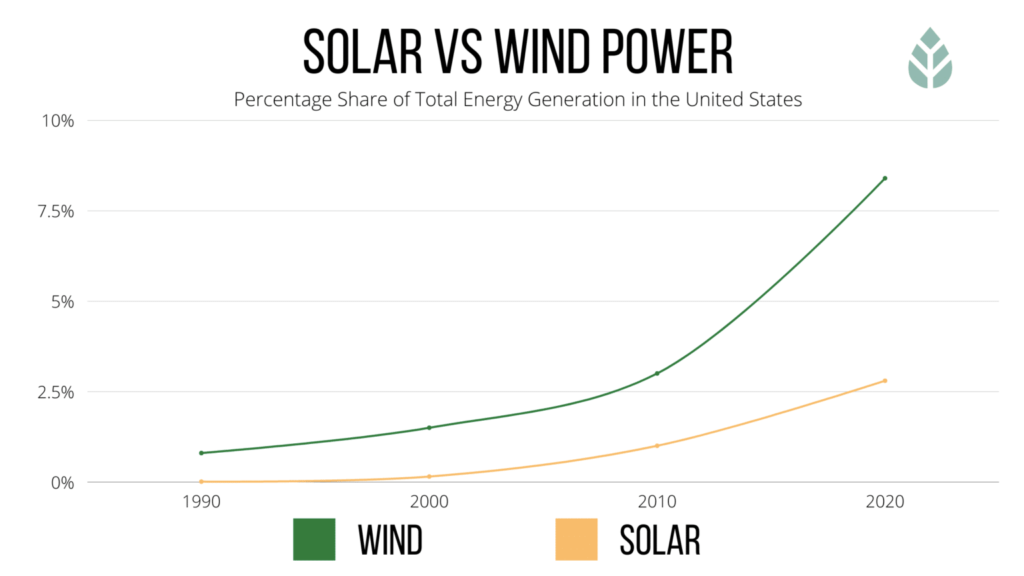
source: https://www.weforum.org/agenda/2022/03/solar-wind-power-renewable-energy-climate-change/
While wind turbines and solar panels are often discussed as separate entities, their strengths can be combined to create more comprehensive renewable energy systems.
The synergies and integration possibilities between wind and solar power offer additional advantages and enhance overall energy generation.
- Complementary Generation Patterns: Wind and solar resources often complement each other in terms of their daily and seasonal availability. Wind energy production tends to be higher during nighttime and winter months, while solar energy generation peaks during daylight hours and summer seasons. Combining these two sources can provide a more stable and consistent power supply throughout the year.
- Hybrid Systems: Hybrid renewable energy systems integrate both wind turbines and solar panels into a single installation. This approach maximizes energy production and can help address the intermittency of individual sources. Hybrid systems often incorporate energy storage solutions, such as batteries, to store excess electricity generated during high-production periods for later use when renewable generation is lower.
- Grid Stabilization: The combination of wind and solar power in a single system can help stabilize the electric grid. When wind generation is high and solar production is low (or vice versa), the overall variability of renewable energy supply is reduced, leading to a more reliable and balanced grid.
- Land and Infrastructure Optimization: Combined wind and solar installations can optimize land use and infrastructure. Instead of separate sites for wind farms and solar arrays, hybrid systems can utilize shared infrastructure, such as grid connections and access roads, reducing overall costs and environmental impacts.
- Diversification of Revenue Streams: Integrated wind and solar systems can diversify revenue streams for project owners. By combining two renewable energy sources, project developers can access multiple revenue streams, such as power purchase agreements, renewable energy certificates, and grid services, enhancing the financial viability of the project.
The integration of wind turbines and solar panels represents a holistic approach to renewable energy generation, offering greater efficiency, reliability, and flexibility. By harnessing the strengths of both technologies, we can achieve a more sustainable and resilient energy future.
The Future of Renewable Energy: A Symbiotic Coexistence
The battle between wind turbines and solar panels may seem fierce, but in reality, these two renewable energy technologies are not adversaries—they are allies in the fight against climate change and the transition to a sustainable energy future.
The choice between wind turbines and solar panels depends on several factors, including geographical location, resource availability, energy demand, and project requirements. In many cases, the optimal solution involves a combination of both technologies or their integration into hybrid systems.
As the renewable energy sector continues to evolve, ongoing research and development efforts aim to improve the efficiency, durability, and affordability of wind turbines and solar panels. Innovations such as floating wind turbines, advanced materials for solar cells, and grid integration technologies will further enhance the capabilities of these technologies.
Policy support, favorable regulations, and financial incentives will play a crucial role in driving the widespread adoption of wind and solar energy. Governments, businesses, and individuals must work together to create an enabling environment that encourages the deployment of renewable energy solutions on a large scale.
The future of renewable energy lies in the symbiotic coexistence of wind turbines and solar panels, working in harmony to harness the power of nature and provide clean, sustainable electricity for generations to come. Let us embrace these green warriors as partners in our quest for a greener and brighter tomorrow.
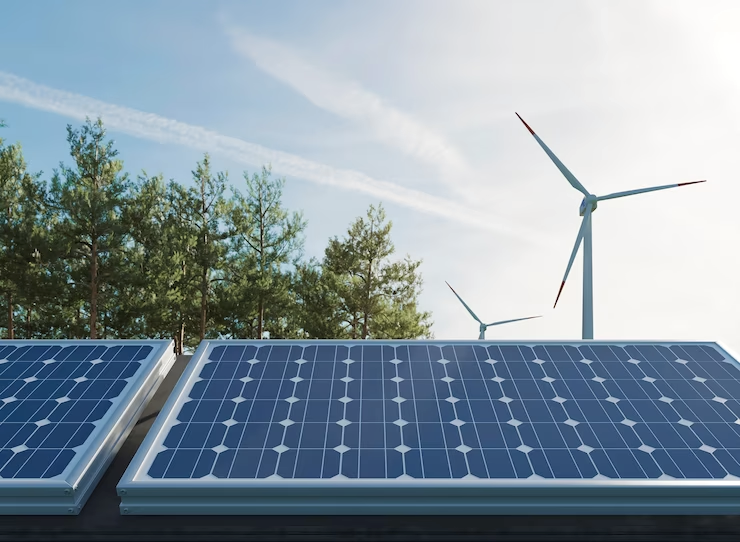
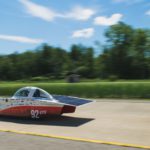
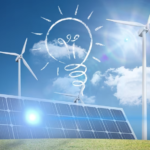


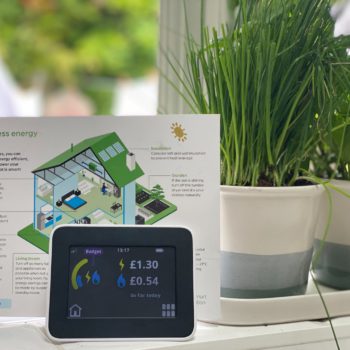
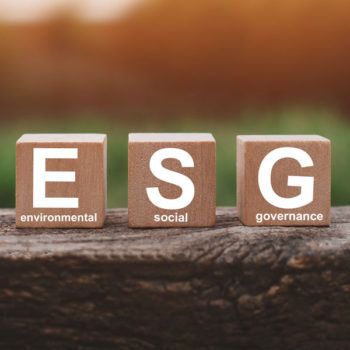
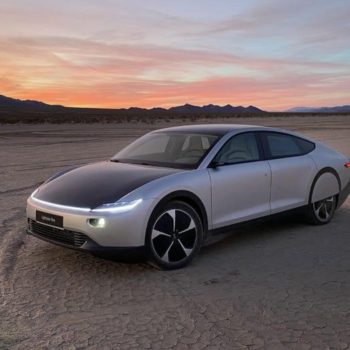

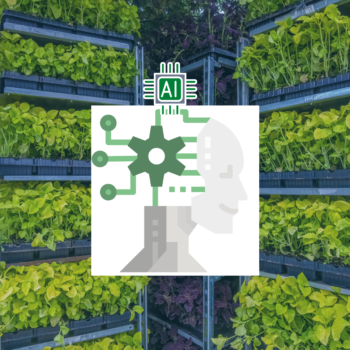
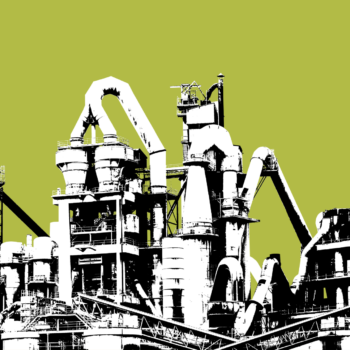


No Comments